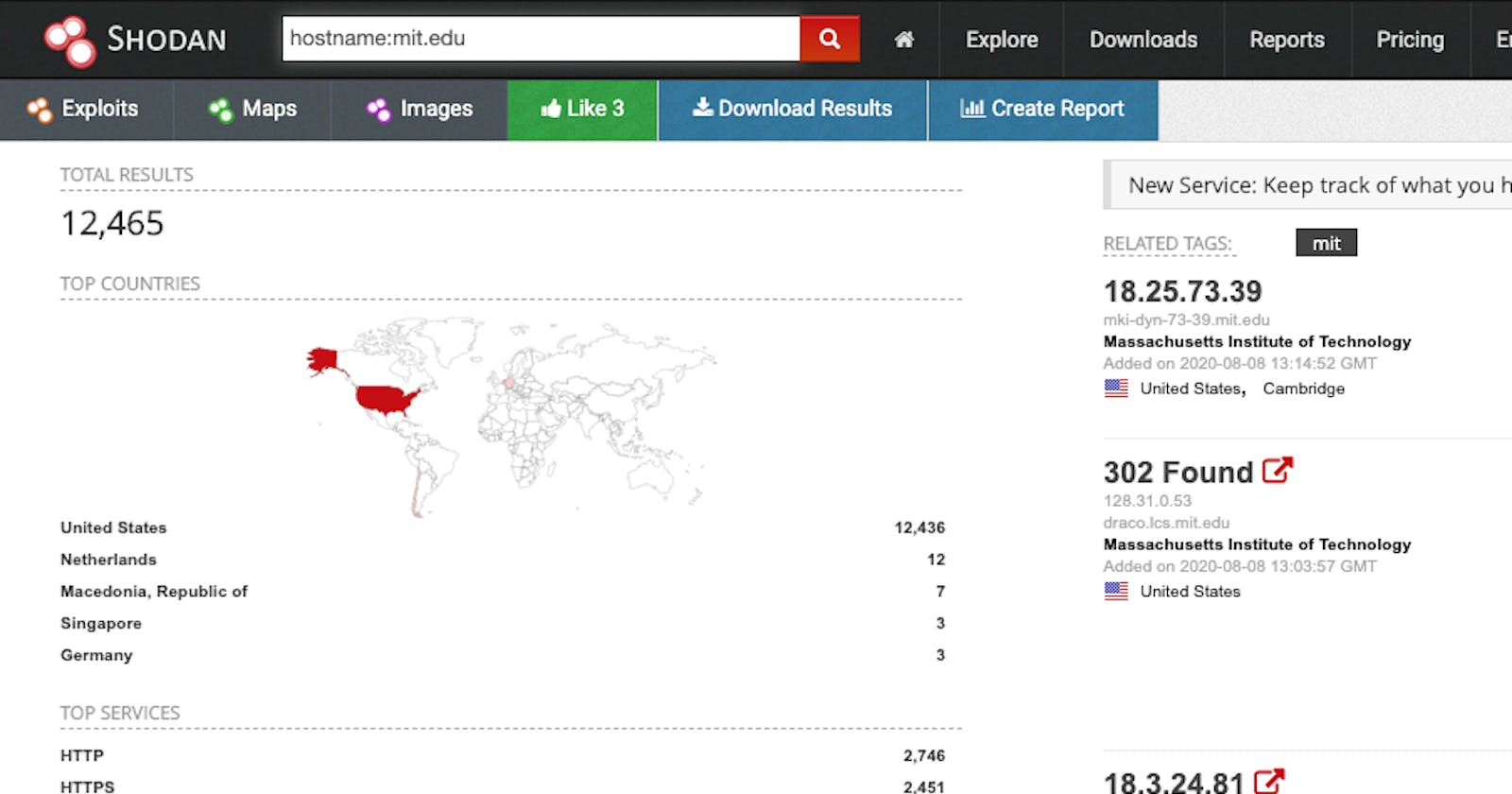Introduction
Penetration testing is an essential part of cybersecurity, helping organizations identify and address potential security vulnerabilities before they can be exploited by malicious actors. With the increasing number of connected devices and the rise of the Internet of Things (IoT), the scope of penetration testing has grown considerably in recent years.
Shodan is a search engine that allows users to search for specific types of internet-connected devices, such as webcams, routers, servers, and more. It provides a wealth of information about these devices, including their IP addresses, open ports, software versions, and some associated vulnerabilities (CVEs).
In this blog post, we will discuss the benefits of using Shodan in penetration testing, and how it can be used to maximize the efficiency and effectiveness of your testing efforts. We'll also cover the key features of Shodan and how to incorporate them into your penetration testing workflow, as well as provide tips on how to use Shodan effectively.
Understanding Shodan and its capabilities
Shodan is a search engine that allows users to search for specific types of internet-connected devices, such as webcams, routers, servers, and more. It provides a wealth of information about these devices, including their IP addresses, open ports, and software versions. With this information, Shodan can be used to identify potential security vulnerabilities in a target environment and help penetration testers better understand the target's attack surface.
Some of the key capabilities of Shodan include the following:
Information Gathering: Shodan provides a wealth of information about internet-connected devices, including IP addresses, open ports, software versions, and more. This information can be used to identify potential vulnerabilities and help penetration testers better understand the target environment.
Filters: Shodan provides a variety of filters that can be used to refine your search results. For example, you can search for devices running a specific operating system or using a specific type of web server. This can help you to focus your efforts on specific types of devices and quickly identify potential targets.
Shodan provides a wealth of information about internet-connected devices, and its various features can greatly enhance the effectiveness of Penetration Testing efforts.
Incorporating Shodan into Penetration Testing Workflow
Incorporating Shodan into your penetration testing workflow can significantly enhance the efficiency and effectiveness of your testing efforts. By using Shodan, a penetration tester can search for devices running the vulnerable component and identify devices within the target environment. By incorporating Shodan into its penetration testing workflow, it is quicker to identify potential vulnerabilities and take action to protect the target environment. The tester could then verify the information obtained from Shodan and conduct further testing to confirm the presence of the vulnerability. Here are the steps involved in using Shodan for penetration testing:
Gather information about the target environment: Use Shodan to search for internet-connected devices in the target environment. This will provide information about the devices, including their IP addresses, open ports, and software versions.
Identify potential vulnerabilities: Use the information gathered from Shodan to identify potential vulnerabilities in the target environment. For example, if a device has an open port that is known to be vulnerable, it may be a good target for further testing.
Verify the information obtained from Shodan: Before proceeding with further testing, it's important to verify the information obtained from Shodan. This may include checking the device's IP address, verifying that the open ports are actually open, and confirming that the software version is correct.
Conduct further testing: Use the information obtained from Shodan and your verification efforts to conduct further testing, such as vulnerability scans and penetration testing.
However, it's important to remember that Shodan may provide false-positive results, and is necessary to verify the information obtained from Shodan.
Conclusion
In conclusion, Shodan is a powerful tool that can greatly enhance the efficiency and effectiveness of penetration testing efforts. By incorporating Shodan into a penetration testing workflow, testers can quickly gather information about the target environment and identify potential vulnerabilities.
However, it's important to remember that the information obtained from Shodan may not always be accurate and must be verified before proceeding with further testing. Additionally, incorporating Shodan into a penetration testing workflow alongside other tools, such as Amass and Subfinder, can provide a more comprehensive understanding of the target environment and help identify potential targets for further testing.

